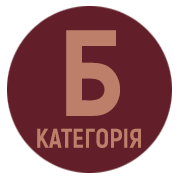FROM POETICS AND RHETORIC TO POSTSTRUCTURAL NARRATOLOGY: THEORETICAL FUNDAMENTALS OF THE SCIENCE DEVELOPMENT AS THE LINGUISTIC DOCTRINE OBJECT
DOI:
https://doi.org/10.24919/2522-4565.2021.47.19Keywords:
poetics, narrative strategy, interdisciplinary narratology, linguistic noratology, cognitive narratology, artistic discourseAbstract
The article presents an in-depth theoretical outline of the narratology development as a science, from ancient poetics to poststructural (postmodern) forms and tendencies that focus on narratives in general and artistic discourse in specific. The historical sequence of origin, formation and development of science has been studied by the problem-chronological method. Descriptive and historical as well as comparative approaches made it possible to analyze the ideas of domestic and foreign scientists, which allowed to highlight two main definitions of the scientific term: traditionally, in a narrow sense, narratology is a science of storytelling; while in a broader sense, it is also the study of narrative as one of the crucial ways of framing, transmitting, and preserving human experience. The chronology of science formation is established and three chronological stages of science development are presented: antiquity, classical period and post-classical or non-classical. The latter is characterized by the presence of many different variants (linguistic narratology, cognitive narratology, theory of possible worlds, thematic narratology, philosophical narrative theories, transgenre theories). Its interdisciplinary status is outlined through philosophical, literary and linguistic aspects. The concept of narrative strategy as a special individual complex of tactics and techniques used be the author in order to influence the potential reader and force him to «live» the story with together, i.e to interpret artistic reality and get some pleasure (according to Bart's interpretation); as well as one of the main terms used by scientists in their search for linguistic analysis of literary artworks. The main chronological stages, characteristics and representatives of each period are systematized and presented idiographically.
References
Мацевко-Бекерська Л.В. Наративні стратегії малої прози (на матеріалі української літератури кінця XIX – початку XX ст.) : дис. ... док. філ. наук : 10.01.01. Київ, 2009. 406 с.
Новікова Є.С. Теоретичні підвалини дослідження наративу в сучасній лінгвістичній парадигмі. Науковий вісник Харківського національного університету. 2010. № 928. С. 186–191.
Основи наратології : хрестоматія до дисципліни (вибрані статті) / уклад. Р.Л. Савчук. Івано-Франківськ : ПНУ, 2019. 40 с.
Папуша І.В. Парадигми посткласичної наратології. Науковий вісник Чернівецького університету. 2014. Вип. 692–693. С 151–155.
Савчук Р.І. Наративні стратегії художнього текстотворення: лінгвокогнітивний і семіотичний аспекти (на матеріалі французьких прозових творів XVIII–XXI ст.) : дис. ... док. філ. наук : 10.02.05. Київ, 2016. 474 с.
Цапів А.О. Наратив «догори дригом» у казці Кетрін Хеллер «Білосніжка: Невідома історія»». Науковий журнал Львівського університету безпеки життєдіяльності «Львівський філологічний часопис». 2018. Вип. 4. С. 142–147.
Жиличева Г.А. Нарративные стратегии в жанровой структуре романа (на материале русской прозы 1920–1950-х гг.) : дисс. ... док. филол. наук : 10.01.08. Москва, 2015. 429 с.
Микалаускайте Е.Ю. Дискурсивная обработка культурной в чужеродности в литературном ксенонаративе: коммуникативно-прагматический аспект : дисс. ... канд. филол. наук : 10.02.19. Красноярск, 2019. 257 с.
Турбина Е. М. Нарратив, повествование. Современный̆ философский̆ словарь. Москва : Академический проект, 2004. 9 c.
Ahmaidan M. A narratological study and analysis of : The concept of time in William Faulkner’s “A rose for emily”. Advances in Language and Literary Studies. 2015. № 6 (3). P. 215. URL: https://doi.org/10.7575/aiac.alls.v.6n.3.
Fludernik M. Postclassical Narratology : Approaches and Analyses. Alber J., Fludernik М. (Eds.). Columbus : The Ohio State University Press, 2010. P. 1–3.
Herman D. Scripts, sequences, and stories. In Elements of a postclassical narratology (112th ed.). Essay, PMLA, 2003. P. 1046–1059.
Nunning A. Narratology or Narratologies? Naking Stock of Recent Development, Critique and Modest Proposals for Future Usages of the Term – What is Narratology. Kindt Т., Muller Н.-Н. (Eds.) Questions and Answers Regarding the Status of a Theory. Berlin : Walter de Gruyter, 1997. P. 239–275.
Savchuk R. The main text-forming strategies in Robbe Grillet's novel «Dans le labyrinthe»: narrative and semiotic implications. LEGE ARTIS – Language yesterday, today, tomorrow. 2018. Vol. 3. № 1. Р. 314–362.
Schaeffer J.-M. Le traitement cognitif de la narration. Pier J., Berthelot F. (Eds.) Narratologies contemporaines : approches nouvelles pour la théorie et l’analyse de récit. Paris : Éditions des archives contemporaines, 2020. P. 215–232.



